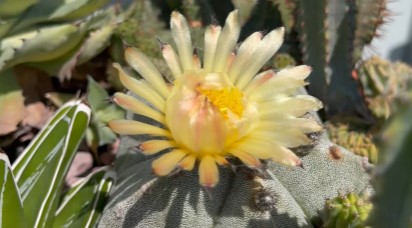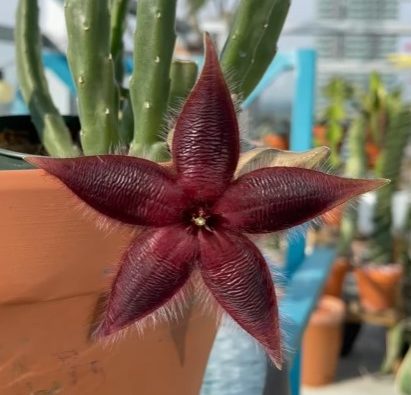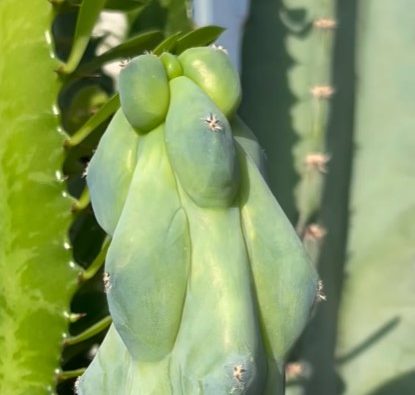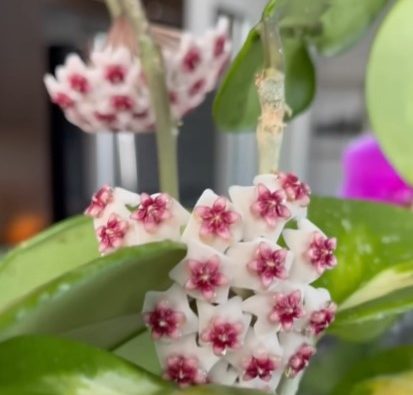Finding My Lifesaver Cactus: The Unexpected Journey with Huernia Zebrina
As a houseplant enthusiast, I’ve spent countless hours watching plant care videos on YouTube. One plant that always caught my attention, but felt just out of reach, was the striking Huernia zebrina, commonly nicknamed the “Lifesaver Cactus.” Known for its otherworldly star-shaped flowers with a thick, candy-like ring in the center, the nickname fits perfectly. I never imagined I’d stumble upon this beauty in real life, but that’s exactly what happened on a casual visit to Vandermeer Garden Centre.
While browsing their cactus and succulent section, I wasn’t expecting to find anything too unusual. But as I slowly looked through the tables, a habit I’ve developed to catch rare finds, I spotted a familiar plant. It wasn’t in bloom, but I instantly recognized the signature jagged foliage. I paused. Could it be? Sure enough, it was Huernia zebrina. I couldn’t believe it.
This is why I always take my time plant shopping. Especially with succulents and cacti, wholesalers often send mixed shipments, and once in a while, an uncommon gem like this slips into the batch. It’s like finding a hidden treasure. Vandermeer, in particular, has a knack for bringing in interesting inventory. This was a perfect example.
Although thrilled with my discovery, my journey with Huernia zebrina hasn’t been easy. The first plant I brought home didn’t make it. I learned the hard way that this plant prefers its soil to dry out completely between waterings. Overwatering was my downfall.
My second attempt was no better, though for a different reason. That plant fell victim to a Mealybug infestation, a dreaded enemy for any indoor gardener. It taught me the importance of routine pest checks and preventive care. Determined not to give up, I’m now on my third try. This time, I’m much more informed and prepared.
These days, I inspect my Lifesaver Cactus regularly for pests, especially Mealybugs. If I spot any, I treat the plant with a spray of 3% hydrogen peroxide, followed by an application of insecticidal soap. It’s not a one-time fix. It can take up to six months of persistence to fully eliminate Mealybugs. But seeing those incredible blooms makes all the effort worthwhile. The flowers truly blow my mind. Nature’s creativity in plant design never ceases to amaze me.
When it comes to care, I’ve learned that Huernia zebrina thrives in a bright, warm location. However, I keep mine in filtered light to protect it from harsh direct sun. During the active growing seasons, spring and summer, I feed it with diluted fertilizer at each watering to encourage healthy growth and blooming. In winter, I scale back, allowing the plant to rest and dry out more between waterings.
An important note about handling, this succulent blooms on new growth, which is quite delicate. I’m extra careful when moving or cleaning around it, as the new stems can snap off easily. If they do break, propagation is simple. Just let the cutting callous over and place it in well-draining soil.
Quick Care Summary for Huernia zebrina (Lifesaver Cactus):
Light: Bright, indirect or filtered sunlight
Water: Allow soil to dry completely between waterings
Soil: Fast-draining cactus or succulent mix
Fertilizer: Diluted fertilizer during spring and summer
Pests: Watch for Mealybugs, treat persistently if spotted
Propagation: Easy from stem cuttings
Temperature: Warm-loving, protect from frost
Bloom Time: Mostly during the active growth season
Bringing home Huernia zebrina was an unexpected joy. Despite the challenges and setbacks, this plant has become one of my favorites. Proof that with a little patience and knowledge, even the most elusive plants can become part of your collection. And when those signature blooms finally appear, it feels like the sweetest reward.



